
|
|
|
|
| © W.P. Armstrong December 2020 |

|
The trail to Mt. Whitney passes by the subalpine foxtail pine (Pinus balfouriana). The Whitney Spires are rugged extensions of the flat-topped eastern escarpment. The highest is the summit of Mt. Whitney (14,500 ft.). In this photo Wayne is getting intense UV exposure on his head contributing to his basal cell carcinomas & melanoma later in life. I realize that my vulnerability to solar radiation is undoubtedly related to my DNA. Photo was taken in August 1968, scanned from 35 mm Kodachrome transparency. If following photos don't convince you to wear a hat, UV sun glasses, and use sun screen, check my images of nose cancer.
Protect Your Skin: Wear A Hat, UV Sun Glasses & Use Sun Screen At An Early Age
|
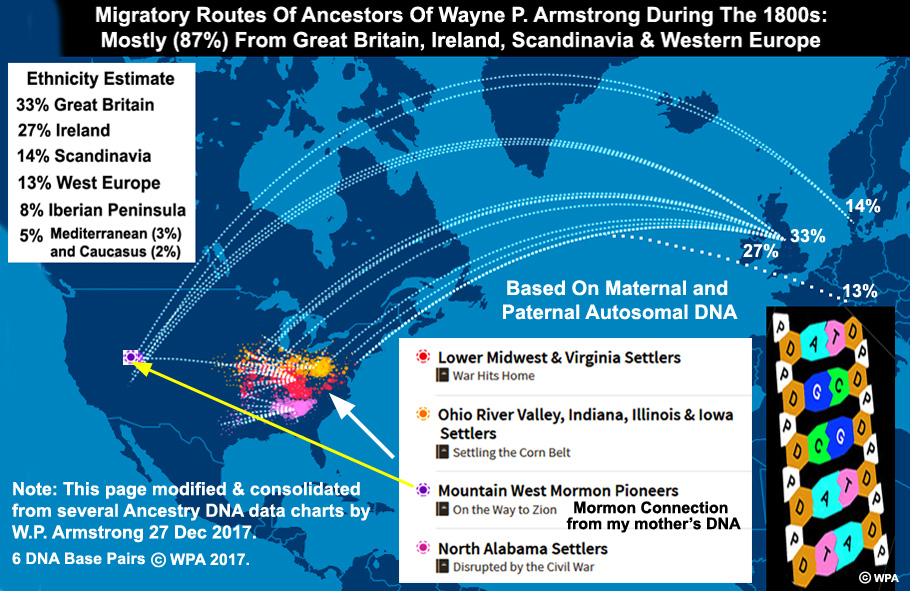
| With a last name of Armstrong it is no surprise that the main ancestry route for me was from the United Kingdom. For members of the Sonoda Family the migration routes should be significantly different. It is amazing how our maternal & paternal chromosomes got reshuffled and transported around our planet! Like my father, I am vulnerable to skin cancers. One reason is a mutation in my DNA called a thymine dimer (see next image). |

| Left: Stained microscopic thin section of the author's left ala showing the basal cell carcinoma caused by thymine dimer mutation. Right: Illustration of a DNA molecule exposed to ultraviolet radiation and the formation of a thymine dimer. |
|
of two basal cell carcinomas from the forehead of Mr. Wolffia. Inset: Resemblance Of Excision To Meteor Crater, Arizona
|
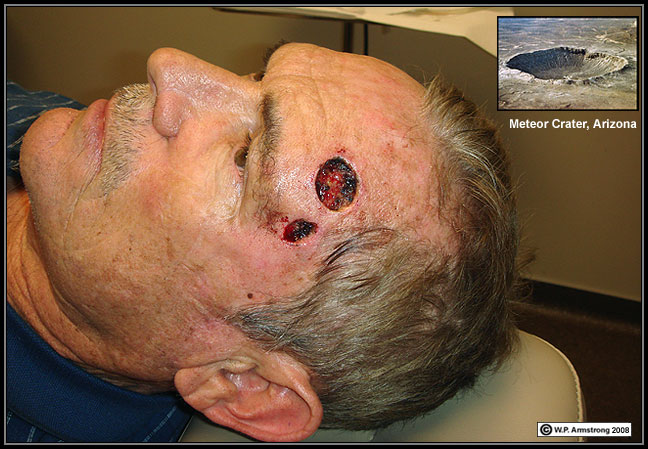
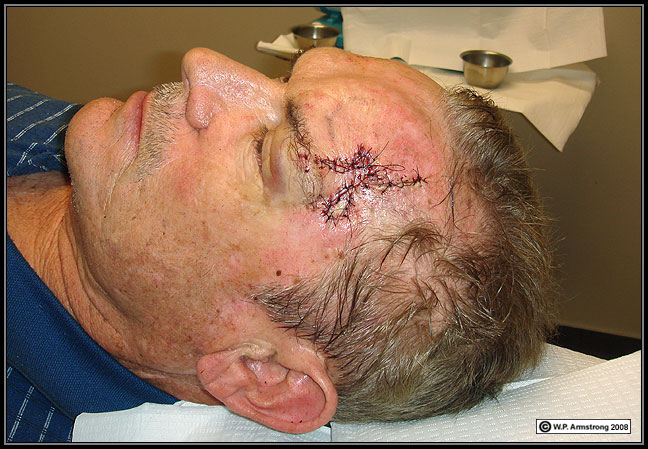

|
A hair follicle (lower right).
|
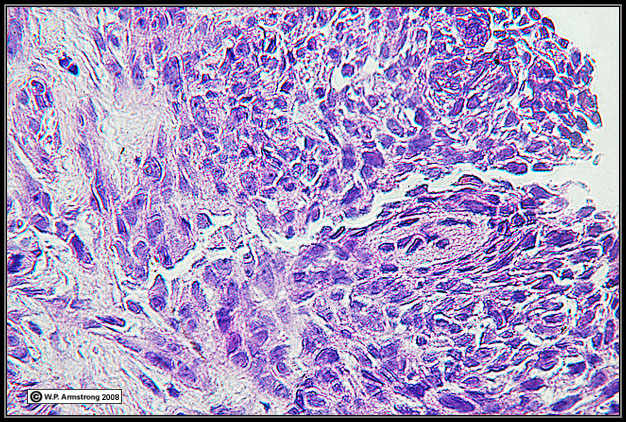
|
Tumor cells with large purple nuclei.
|
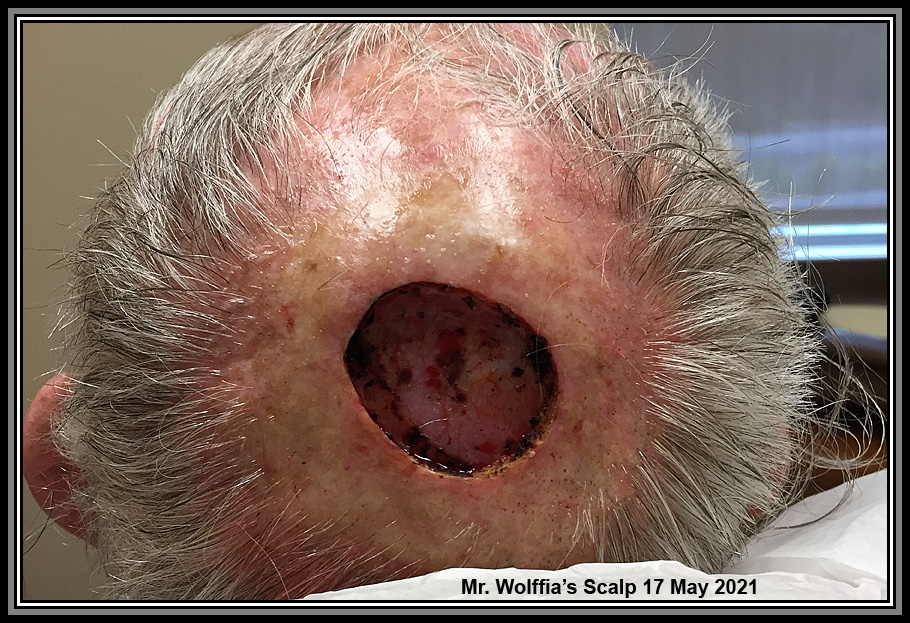
| iPhone image just before bandage applied to scalp surgery (17 May 2021). Unlike the author's basal cell carcinoma surgeries, no sutures were used. Hopefully, epidermal tissue will fill in the crater. If biopsy reveals malignant melanocytes beyond the crater border, more tissue will need to be removed. |
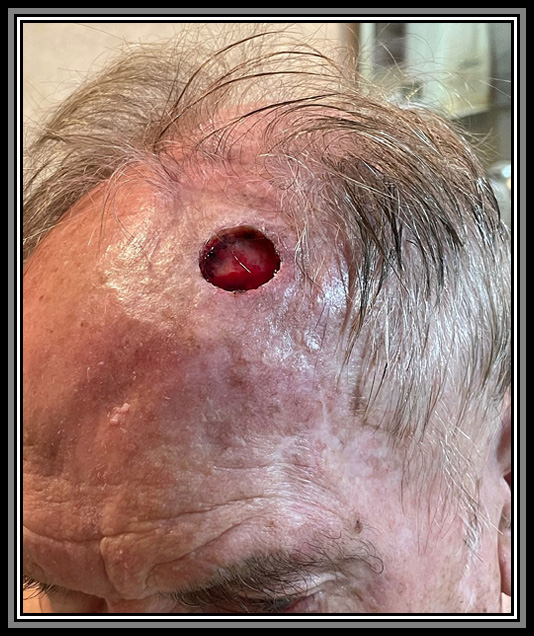
|
One day after melanoma surgically removed (15 Dec 2020).
|
| Melanocytes are dendritic, melanin-producing cells located in bottom layer of skin epidermis. They are responsible for the color of skin, hair and eyes. In melanomas, malignant melanocytes grow out of control. If not stopped in time they can metastasize and rapidly spread to other organs of the body. |

| Keratinocytes are the primary type of cells found in the epidermis. They constitute 90% of epidermal skin cells. Actinic keratosis is a rough, scaly patch on skin that develops from years of exposure to the sun. They are often brown in color and are sometimes refered to as pre-cancerous because they can develop into squamous cell cancer. They should be examined regularly by a dermatologist and are often removed with liquid nitrogen. |